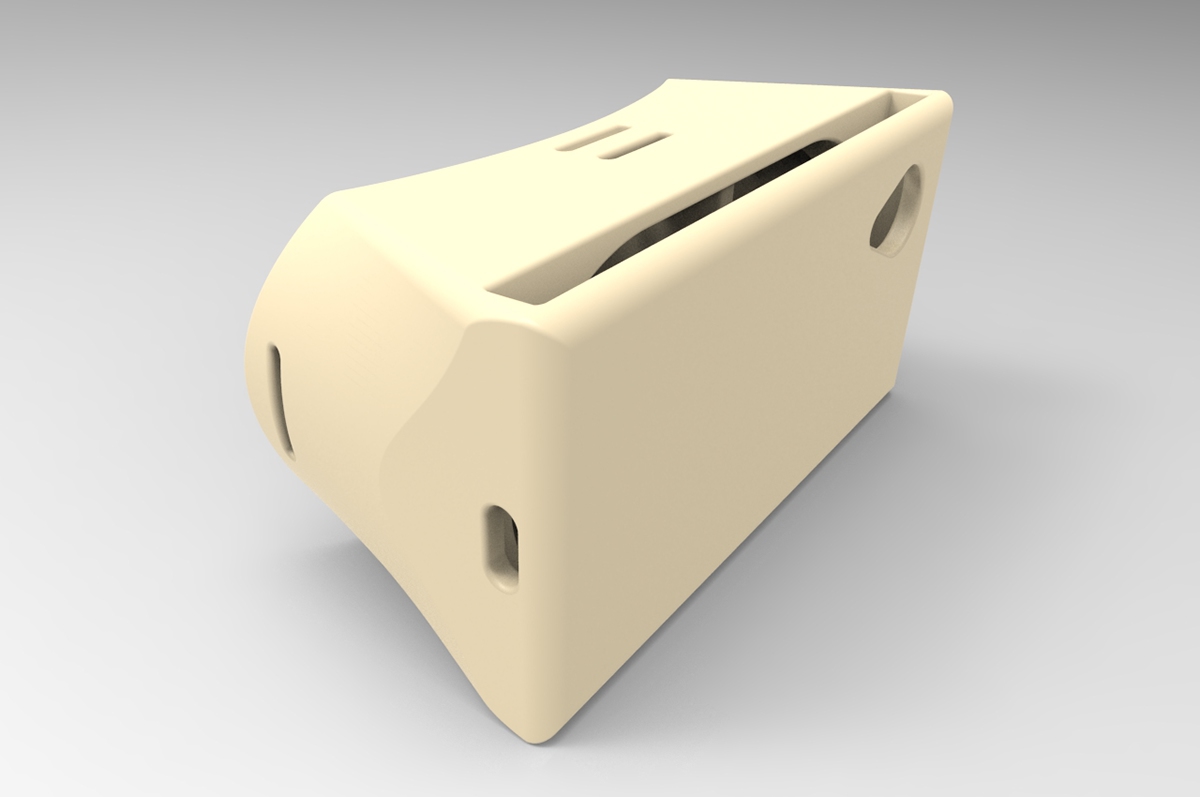In early 2014 google released a virtual reality headset made out of cardboard. The device was designed by David Coz and Damien Henry, two Google engineers from Paris. I got my hands on a Google Cardboard in December of 2014 and was immeaditly amazed. The device did exactly as promised; it created a virtual reality headset using my smart phone and a piece of cardboard.

Figure 1: Original Google Cardboard Design
The initial design was great for what it was trying to accomplish, that is a low cost VR headset for developers to create engaging apps. However the device did have a few missing features as well as a few annoying quirks. I was working on fixing these problems on my existing Google Cardboard when I realised that it would probably be easier to redesign the entire device than to attempt to add components onto the initial design. I fidgeted for a while with complex cardboard geometries and realized that cardboard wasn’t the easiest tool for design, I immediately thought of another open source medium, 3D Printing.
3D printing would allow me to create any shape I could think of, it would also allow me to post my CAD files online and allow others to replicate it. A 3D modeled headset would also allow users to have a device that has a little more worth than cardboard.
I worked on the design below and have posted a copy of the CAD files on grabcad. I made sure to fix the issues I found including: a head strap, a larger nose opening, and a sturdier phone holding apparatus. As well as attempted to give the device a smoother more futuristic look.
Download Link
https://grabcad.com/library/3d-printed-vr-headset-1

Figure 2: Improved Google Cardboard Design Back View

Figure 3: Improved Google Cardboard Design Front View

Figure 4: Assembly of two Printed Components
The device was designed in two parts to allow users with smaller 3D printers to make their own headsets as well as allow an easy way to install the lenses.

Figure 5: 3D Printed Device Back View

Figure 6: 3D Printed Device Front View

Figure 7: 3D Printed Components
The designs were printed using a Stratasys uPrint 3D printer. They took approximately 12 hours to print and the two halves fit together perfectly. The design allows the device to be super rigid but also super light thanks to the 30% air filled center. The device can hold the Nexus5, iPhone 6 and Samsung Galaxy S4.

